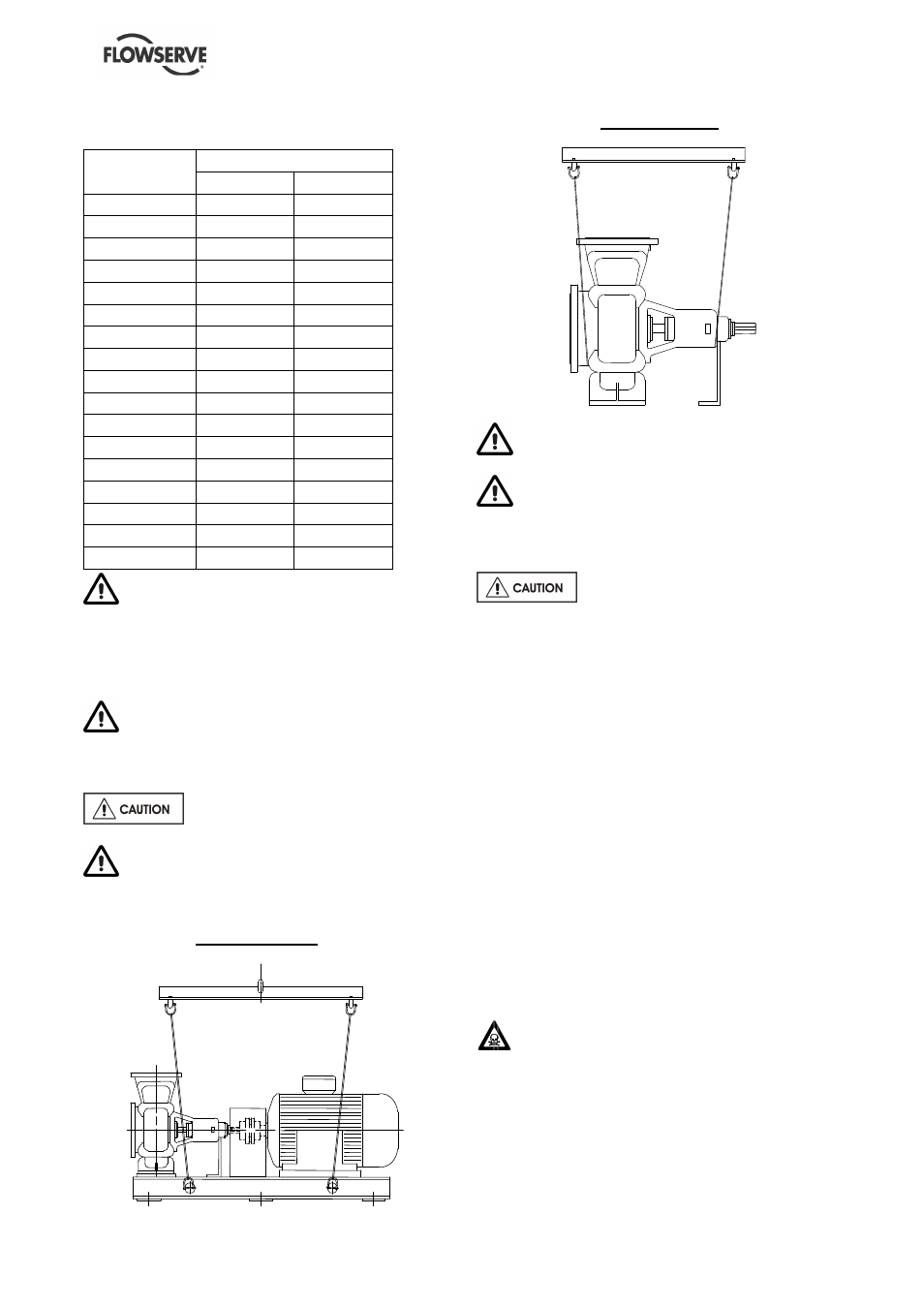3 lifting, 4 storage, 5 recycling and end of product life – Flowserve DS User Manual
Page 12

DS USER INSTRUCTIONS ENGLISH 71576283 - 02/13
02
Page 12 of 36
flowserve.com
2.2.2 Pump masses
PUMP TYPE
PUMP MASS
kg
lb
200 DS 401
320
706
200 DS 451
340
750
200 DS 552
470
1036
250 DS 401
340
750
250 DS 452
360
794
250 DS 552
500
1102
300 DS 401
500
1102
300 DS 452
575
1268
300 DS 553
670
1477
350 DS 703
990
2183
350 DS 854
1150
2535
400 DS 553
1010
2227
400 DS 603
1160
2558
400 DS 704
1250
2756
400 DS 855
1550
3417
500 DS 704
1280
2822
600 DS 604
1590
3505
All motors (for masses see the motor
description plate) must be handled with a winch.
2.3 Lifting
2.3.1 Slinging of motor pumps units
Use handling means in accordance with motor
pump unit mass mentioned on the CE plate. For the
masses of the pumps bare end of shaft see table §
2.2.2 and nameplate.
To avoid distortion, the pump unit
should be lifted as shown.
A crane must be used for all pump sets in
excess of 25kg (55 Ib). Fully trained personnel must
carry out lifting, in accordance with local regulations.
Motor pump unit
Bareshaft pump
When handling always wear gloves, safety
boots and an industrial safety helmet.
For masses above 25 kg (55 lb), manual
handling is forbidden.
2.4 Storage
Store the pump in a clean, dry
location away from vibration. Leave piping
connection covers in place to keep dirt and other
foreign material out of pump casing. Turn pump at
intervals to prevent brinelling of the bearings and the
seal faces, if fitted, from sticking.
Do not store pumps starting on the fan guard.
The pump may be stored as above for up to 6
months. Consult Flowserve for preservative actions
when a longer storage period is needed.
2.5 Recycling and end of product life
At the end of the service life of the product or its
parts, the relevant materials and parts should be
recycled or disposed of using an environmentally
acceptable method and local regulations.
If the product contains substances which are harmful
to the environment, these should be removed and
disposed of in accordance with current regulations.
This also includes the liquids and or gases in the
"seal system" or other utilities.
Make sure that hazardous substances or toxic
fluid are disposed of safely and that the correct
personal protective equipment is used. The safety
specifications must be in accordance with the
current regulations at all times.
